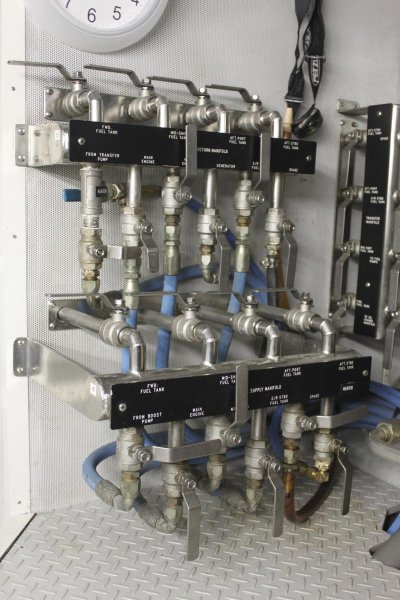Richards fuel polishing cleaned the FUEL.
It did not clean the tank , do my guess is real ocean motion banged some of the sludge off the side walls and filled the filters.
The only way to clean the tank is physically , a service hole and a wooden scraper.
Best if tanks were made with sumps , but they would cost more , so are only fitted on custom boats.
I'm not sure we are all on the same page and I also may have been unclear in what helped and didn't help.
First I was describing two different issues:
1. I liked the fuel Polisher because it got the crap and dead fuel out of the tanks, once I started coming north, just after purchasing the boat. We had some days of rough (3-5' waves Ha!) weather.
On getting to NY, I changed the filters, Fuel polisher (2x) and Racors, and took out about 1 gallon of black slurry, not that thick, (not I know to be dead bio stuff). But the black slurry worried me, , so I did open the inspection port on the starboard tank and all I had at the bottom of the tank was about 4" of good, clean fuel. So using FP during that 1,000 mile trip cleaned the tanks well. So I concluded the fuel polisher was effective in getting the tanks cleaned.
2. The Dual Racor setup. The only way to go, as it allowed me to keep changing filters when I did have issues. The tanks were clean when I left RI. I'm pretty sure now the lee side tank vent is the issue. That's where I think most of the water got in the tank. I also do not think the fuel from Horta was that clean.
But I really had no problems, until that last 24 hours when the sea was 120° to 100° off the bow. The lee side vent was underwater more than 30% of the time. By being able to switch the Racor lever and use the alternate filter was critical, as it also allowed me to change the bad filter, easily, while underway and had I had to do it even more, it would not have been a problem.
The idea was that I needed to keep the crap away from the engine mounted filters which were a PIA to change and impossible to do while underway.
Even in writing this I realized in the future under such conditions, I will transfer fuel to the windward tank while underway, and use that tank predominantly. That may also give me a slightly more stable configuration.
And I am planning on making a larger loop in both vent lines this spring.



